Case No. 17 | Pacov Cemetery of German Soldiers (2017)
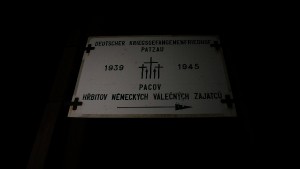
This article will introduce you to the research of paranormal phenomena made by the Paranormal tým from 9th to 10th June 2017, consisting of Ondřej Bezouška, Kateřina Běhanová, Kamil Valeška, Michala Valešková and Pavel Mička. The research took place from 11:00 pm on 9 July 2017 to 4:00 am on 10 July 2017.
The Paranormal tým z.s. has already investigated this site once. In 2013, when it conducted an esoteric investigation here. However, they will now focus on valid data through which conclusions will be drawn for this case.
Before we get to the actual research process, let's talk about the history of the Pacov Cemetery of German Prisoners of War. That is to say, the place - a fenced-in paling - with several tombstones, a stone path and a three-metre wooden cross at which granite slabs are laid with the names of all those buried here in mass graves.
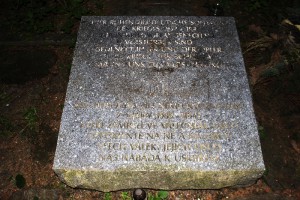
history
In 1945, Europe is in ruins. The Third Reich has fallen, and the rule of law is slowly being re-established in the liberated territories.
The Protectorate of Bohemia and Moravia ceases to exist and in its place the pre-war borders of Czechoslovakia without Podkarpatska Rusa are restored.
Apart from the Czechoslovaks, however, there are many German soldiers on our territory who tried to escape the Red Army to the west. Sixty thousand of them are being deported to the town of Pacov, where a large prison camp is being built. Here these people live, work, help each other and, for example, set up their own bakery.
This large number of people in a small area naturally also meant a considerable health risk. Inadequate hygiene, poor health care. All this culminated in the only possible problem. An epidemic of typhus, which spread through the camp, allegedly through infected water.

Typhoid fever is transmitted by the bacterium Salmonella typhi, which is found only in humans and is excreted in faeces or urine.
On the basis of medical notes on the course of the disease, we can thus reconstruct in some detail what the infected soldiers experienced and what they most often died of.
Eight to fourteen days after the infection, the German prisoners of war began to have their first problems. They developed fevers ranging from 39 to 40°C.
Along with the high temperature, the sufferers began to have problems with defecation - constipation. Their heart rate slowed and the typical red spots of typhoid fever appeared on their abdomen.
In the second phase, after constipation, the affected began to suffer from mushy diarrhoea. These were so severe that the intestine began to bleed when they were worse. In exceptional cases it could go as far as rupture of the intestinal wall and contamination of the blood with excreta, which meant certain death.
The most common cause of death from Typhus is the spread of the bacterium through the blood. This causes patients to spread the disease to other organs. This can cause inflammation of the meninges, gallbladder, lungs or liver, which can lead to their failure[i].
It was because of these complications that 284 German prisoners of war died at this site.
They were then buried in mass graves at the site where we will take our measurements.
It is said that even today, in some places, it is forbidden to drink the local water, because even after decades it can still carry this dangerous virus.
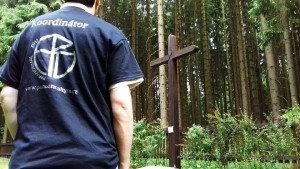
June, 2017
73 years later, on June 9, 2017, we head to the place where our Paranormal tým z.s. was born four years ago. A place where we have captured interesting EVPs and have already had one summer night.
Now in a completely different composition we welcome the famous Pacov cemetery, which seems to be frozen in time. Everything here is as it was when we first investigated. A wooden sign continues to inform the public about the cemetery. A rusted trash can still lies by the roadside, and the paling is still surrounded by the same varnished wood that has so far resisted the ravages of time.
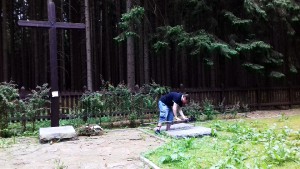
It's about five o'clock in the afternoon, so we have plenty of time to shoot the day's material for the documentary. And it's during this time that the other members of this research are arriving. Besides me and Katerina Běhanová, we welcome Kamil Valeška and Michala Valeška among us. A couple who a few weeks later will become members of the Paranormal Team z.s.
Last to arrive is Pavel Mička as an impartial observer. Together we then go into the forest to search for former military buildings, which we also came across and investigated four years ago.
After an hour's wandering, during which Ondřej Bezouška remembers the right way five times, we reach the garages, which are now fenced off and closed. A snowplough and other machines, which are not useful at the moment, are sleeping there.
This gives us clarity on the whole research. We can no longer follow the 2013 scenario and will instead focus on the cemetery itself.
We arrive there, deploy the equipment and begin our investigation at 11:00 at night.
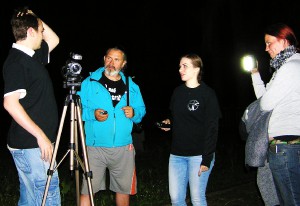
first phase of the investigation, 11:00 p.m.
The first phase of the investigation takes the shortest amount of time. Its aim is to monitor the natural electromagnetic field under normal conditions.
We walk repeatedly around the cemetery and measure the recorded values. In the meantime, bats are flying overhead and the treetops are tilting slightly in the slowly increasing wind.
From the values measured by the Mel meter and the K2 meter, two instruments that detect energy changes in the electromagnetic field, we conclude that deflections of around 0.6 MilliGauss indicate natural fluctuations in the electromagnetic field and therefore nothing mysterious should logically be happening here.
With these conclusions we also proceed to the next stage of the investigation.
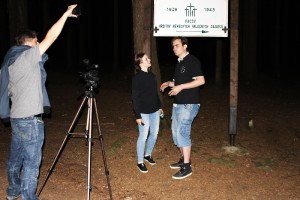
second phase of the investigation, 0:00 hours
It's a little after midnight when the second phase of the research begins. All present, equipped with a variety of equipment ranging from EMF field meters to cameras, thermometers to sound recorders, are now trying to record possible intelligent manifestations through Czech, English or German questions through changes in the electromagnetic field at precisely stated time intervals.
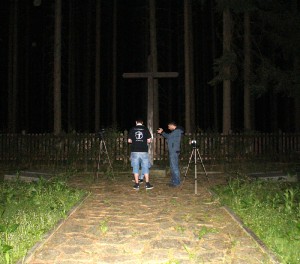
"Is anyone here with us?" Kamil asks in the middle of the cemetery.
"Is there anyone here who would like to talk to us? To say hello. To give a message to a relative?" Katka joins in.
Pavel Mička with his K2 electromagnetic field meter detects no significant fluctuations above 1.5 MilliGauss.
Nor do the photographs show us anything mysterious that could be concretised into a possible paranormal phenomenon.
The cemetery is peaceful and quiet.
It's approaching 1:00 a.m. and we see flashes in the distance. A storm is approaching from the southwest. The cold breeze gradually increases and we slowly finish the second phase of our research.
Neither Czech nor German is giving us any concrete responses. Subjectively, it is quiet here and we are yet to evaluate the audio and visual recordings in detail.
It starts to rain around 1:30. The storm is upon us. Wind-dropped branches from coniferous trees fall around our cars. The rain is drumming on the roofs of the cars and now and then nature lights up with lightning and then shakes with the ensuing thunder.
We wait in the safety of the car, preparing for the final stage of the investigation, which will come at three o'clock in the morning.
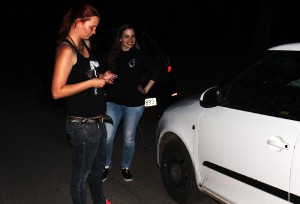
third phase of the investigation, 3:00 a.m.
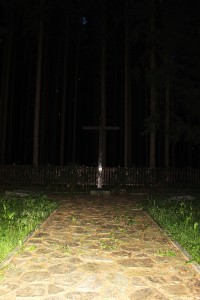
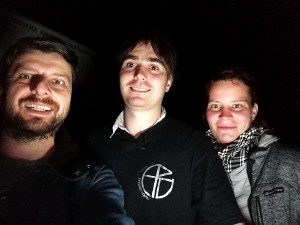
Evaluation
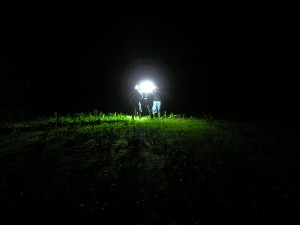
video of the investigation
- in Czech, without English subtitles

